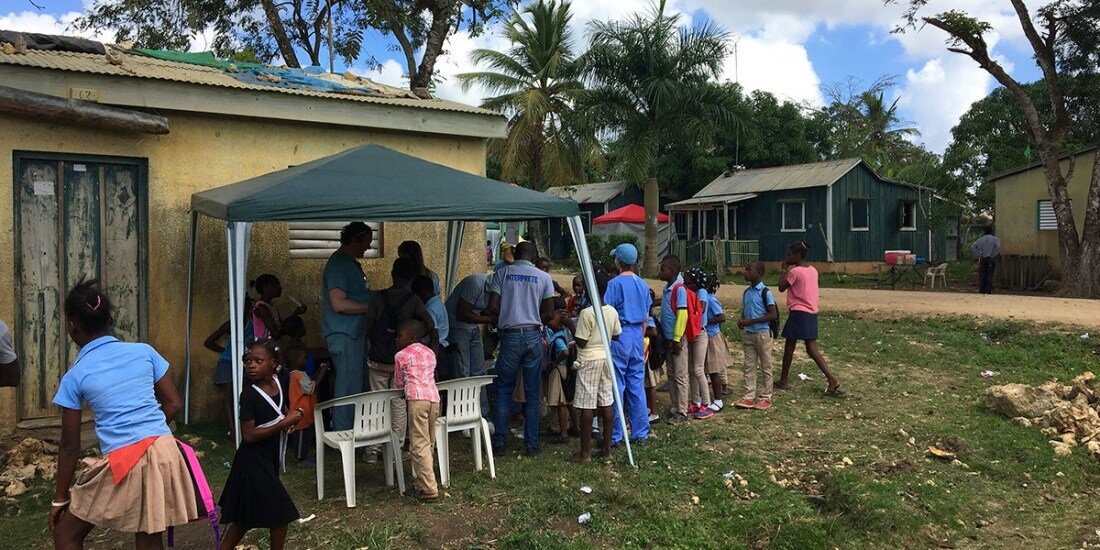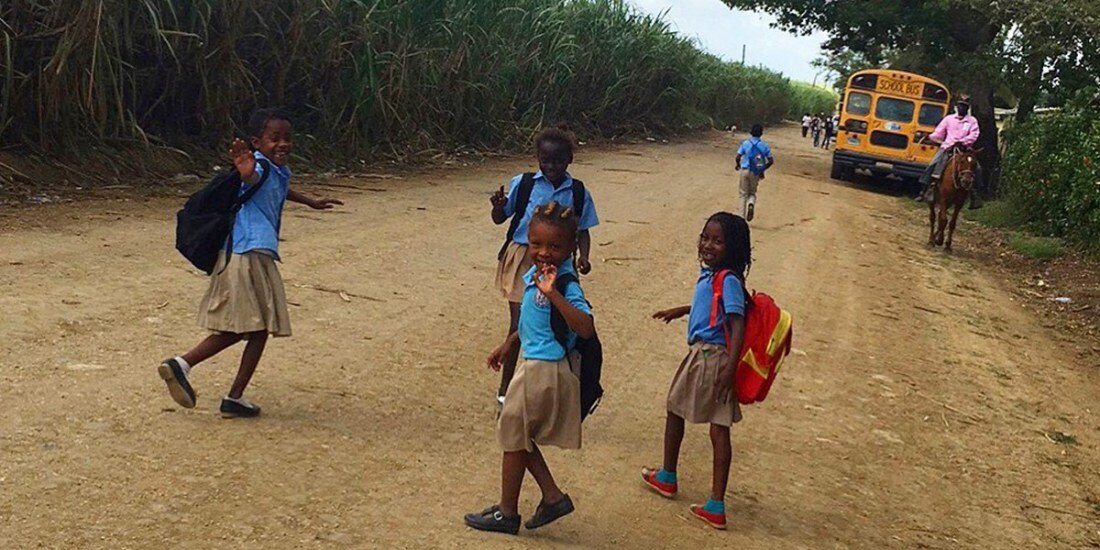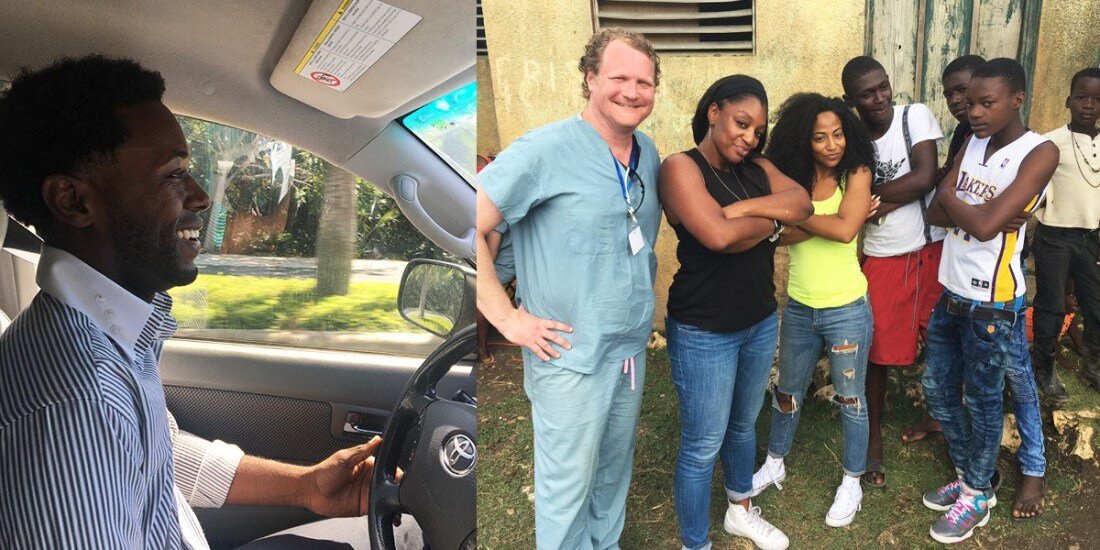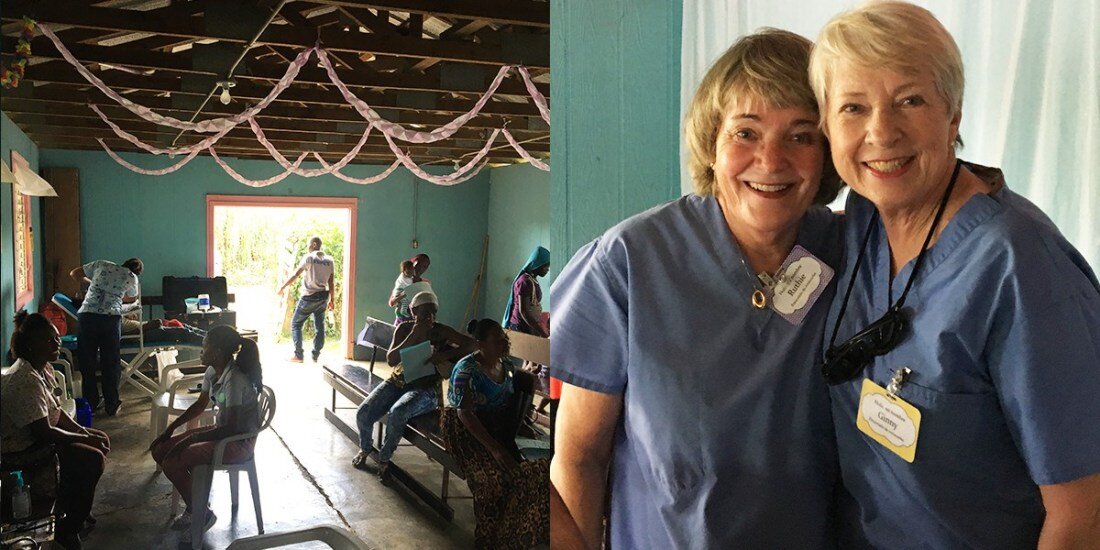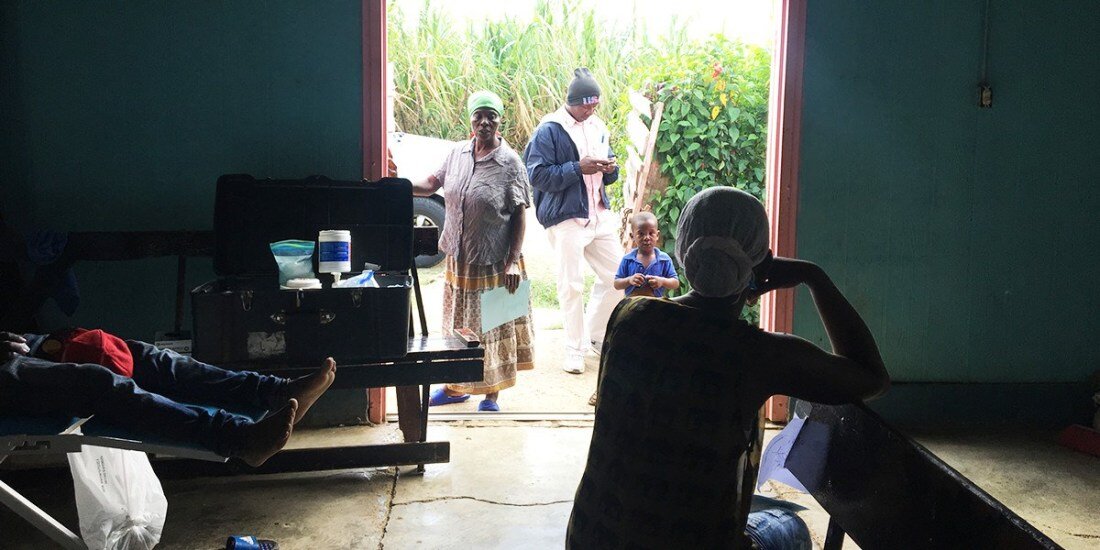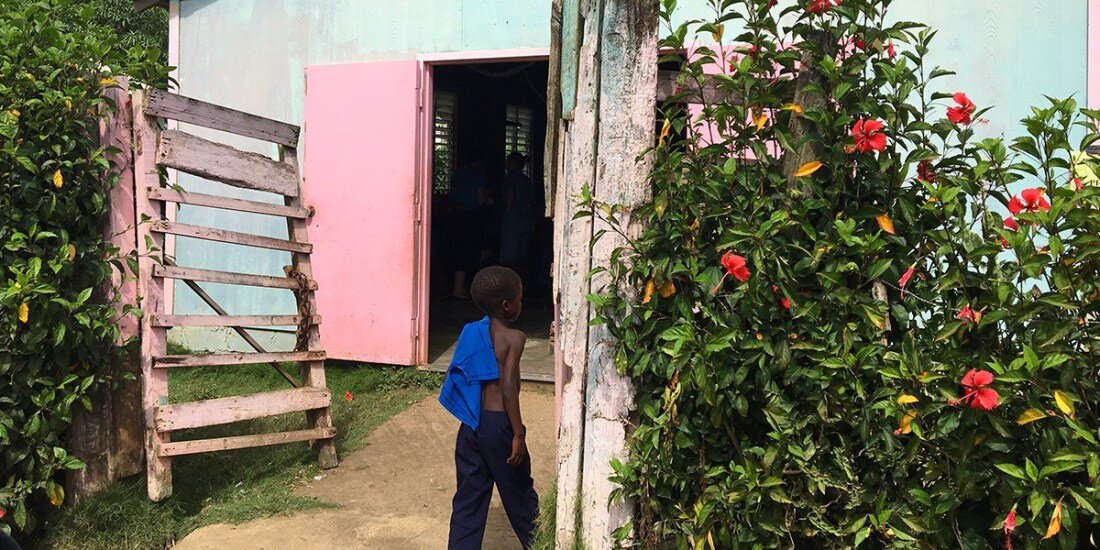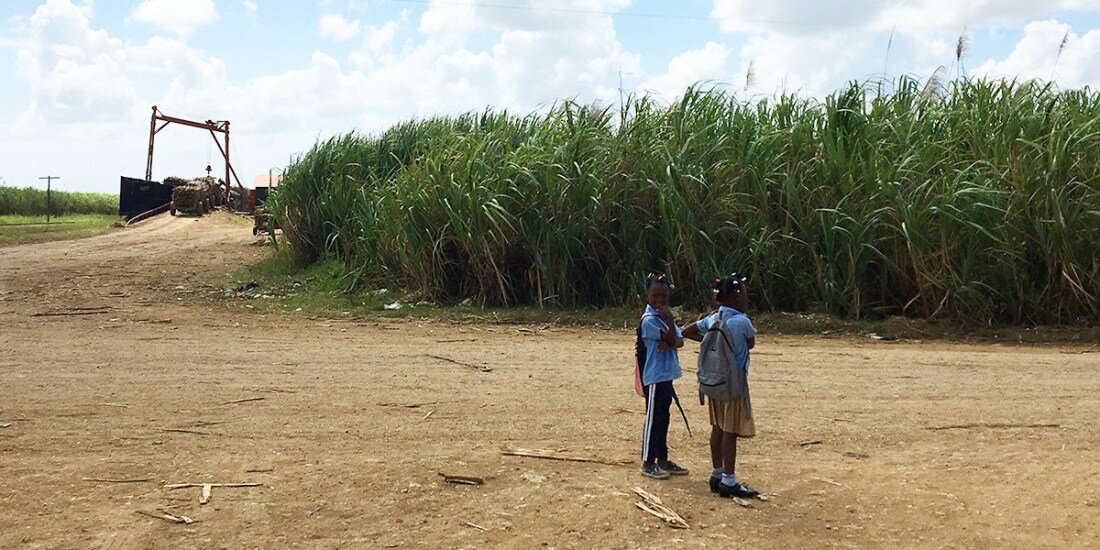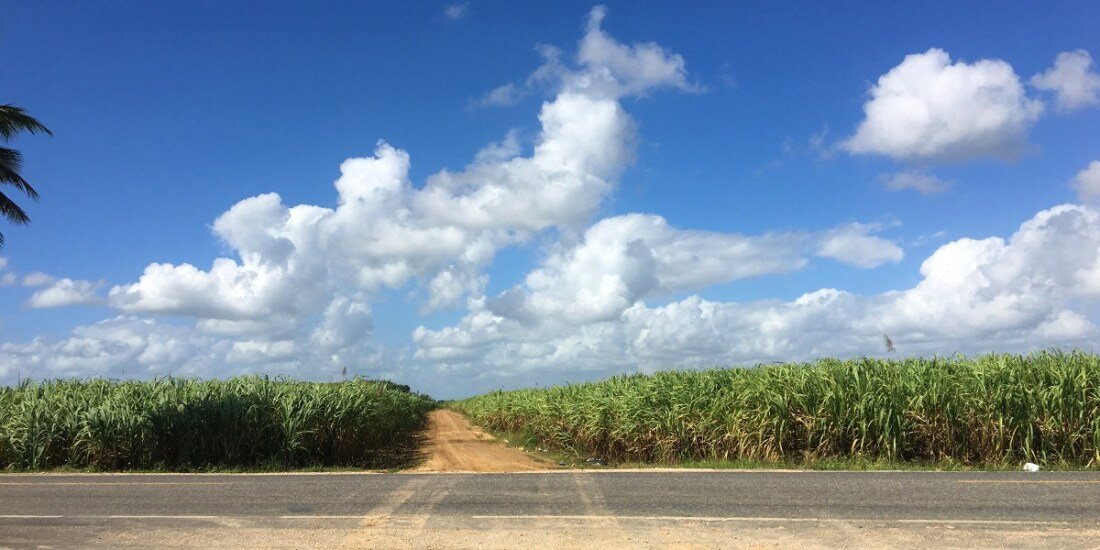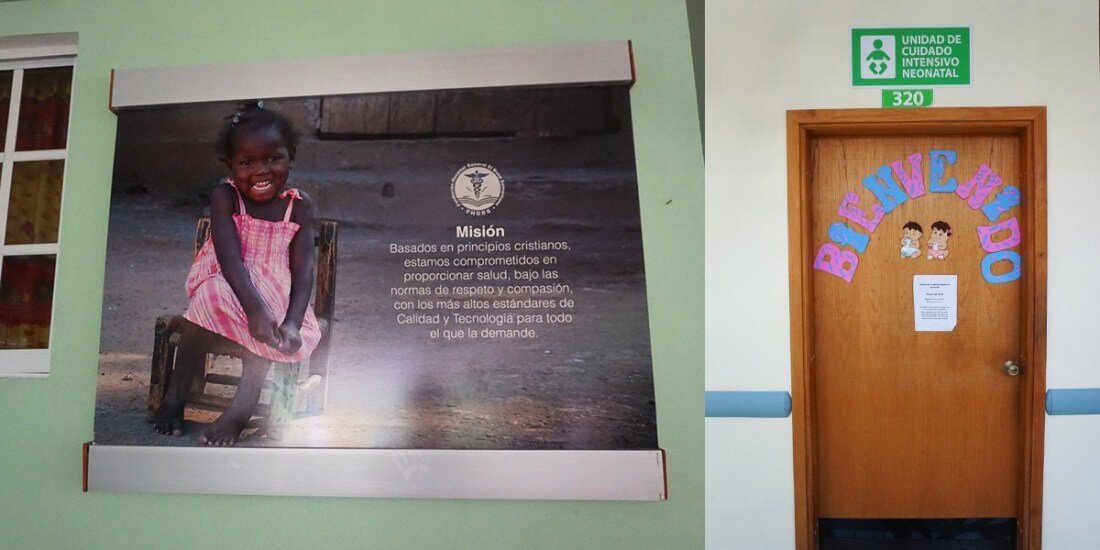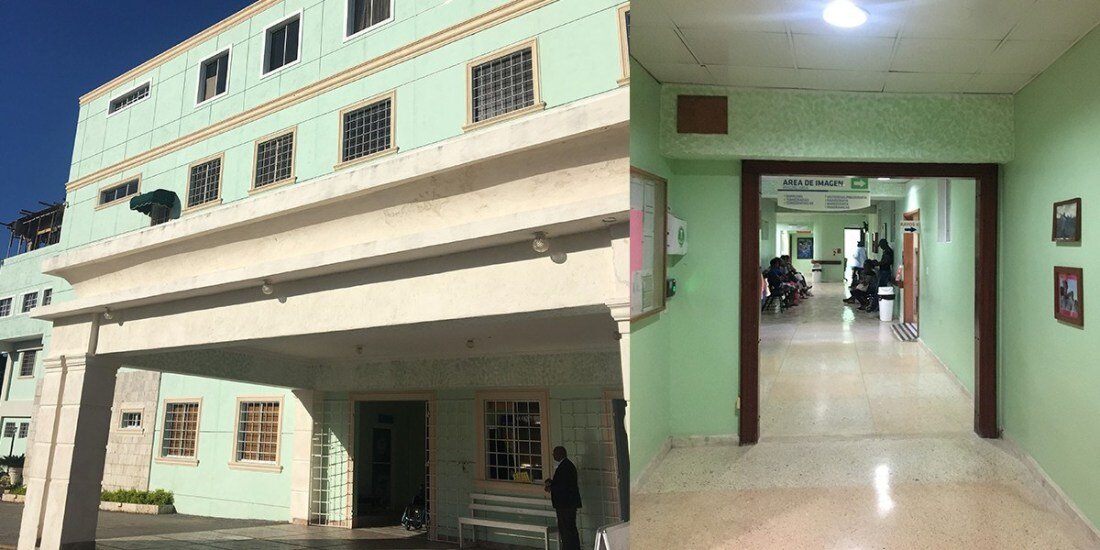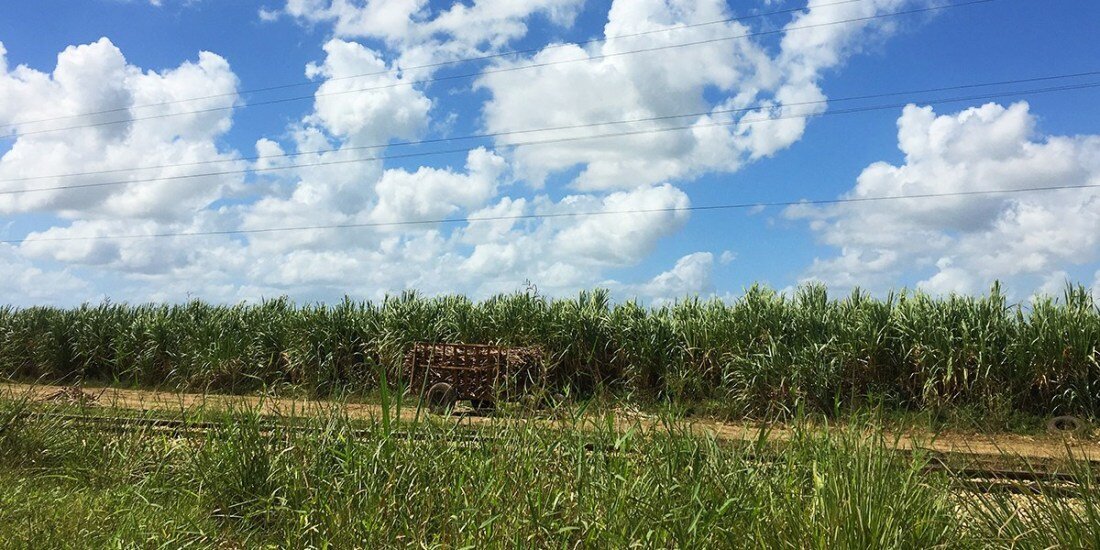Giving Back and Getting More in Batey Guajabo
“Hey! Hey bel ti fi!”*
If there is one thing that has remained true in my travel life, teenage boys will definitely be teenage boys, no matter their location or language.
It’s a super hot afternoon in February and my friend Africa and I are walking on a dirt road that leads into the heart of Batey Guajabo, a settlement town that is nestled in what seems like an ocean of sugarcane fields outside of La Romana, Dominican Republic. Both here and in Cuba, the word ‘batey’ is associated with one thing—sugar, specifically, the poor communities nestled within the cane fields that are home to sugar workers and their families. Though the over 500 bateyes in the Dominican Republic are scattered in pockets around this split-nation island, one thing that unites them, they are almost exclusively filled with Haitian people. Namely, Haitians that have been coming to the Dominican Republic to work the fields since the 1930s.
This explains why my would-be teen suitor chose to give a holler in Kreyol versus the choppy local Spanish I've grown accustomed to hearing. In the bateyes you will hear Haitian Kreyol everywhere, especially among the adults. With younger people and children you will hear a blend of Spanish and Kreyol which is its own sound. The only snippets of English came from me, our guide and my new friend Ken from Kansas City, Missouri. Ken was a part of a larger team of medical workers and volunteers that were in Guajabo with El Buen Samaritano, The Good Samaritan Hospital and Mission, which was hosting us and giving us an in-person look at their work.
In the La Romana and the adjacent Punta Cana region, El Buen Samaritano is closely associated with and highly regarded by the Haitian community, it was started by one of their own. Motivated by the unnecessary death of a Haitian woman who died in childbirth due after being turned away from her local facility, the Reverend Jean Luc Phanord decided to take action for his community. In 1985 the vision for a full scale hospital where no one would be ever be denied care was set and in 1997 the facility opened its doors as an outpatient clinic. Today, it is a modern three, soon to be four, story hospital that has grown with the continuous help of a network of churches, non-profit organizations and volunteer university, church and medical missions from around the globe.
I met director Moises Sifren who, in the spirit of things being full circle, is the son of that very woman whose tragedy inspired the building in which he works. Moises and I discussed a variety of things, from how they schedule specialty services around the program of visiting missions both at the hospital and to makeshift clinics in the local bateyes, to the controversial 2013 immigration ruling that left many people, especially Haitians, in a state of flux. Throughout our conversation one thing was clear; while Sifren and his team love and appreciate donations, Good Samaritan and the people they serve are best helped when individuals take time to visit and give back alongside the communities they serve.
Moises Sifren, Hospital Director
On a tour of the hospital, this was evident by all the volunteers we met along the way. From the visiting construction team from Maine who were working on the building’s expansion and updating the electrical and plumbing work to the Kansas City medical team who were manning the maternity ward, Good Samaritan functions on monetary and product donations, but thrives on the talent of people who lend their expertise to keep the facility going. And while the hospital may be a well-oiled machine, the power of people, doctors and everyday folks alike really comes to life in the bateyes.
A feisty peanut vendor and Jonathan…he bought the peanuts.
After spending the morning at the hospital we set out for the fields. On our way, we were told that Batey Guajabo was a “better” or “nicer” batey. When we arrived, I went into a quiet shock. Guajabo was beyond poor. A series of mint green wooden shacks stood on brick/concrete foundations, plastic chairs were the main source of furniture, and plastic bowls and pots (the main tool to transport water and food) were stacked all around. There was no plumbing and little electricity. Showers and toilets are outdoors. There is a small two-room primary school run by the government that only educates up to a certain level and from what Africa and I could see had few students. Compared to even the poorest hoods of urban Santo Domingo and La Romana, Guajabo was much worse. The batey itself is owned by the company who own the adjacent sugarcane fields, where workers are paid around 100 dollars a month. In order for a man to live in the batey with or without his family, he must work with the company.
The work is grueling and mostly done in the same fashion as when slavery dominated the Caribbean, South America and United States centuries ago with machetes in hand and bundles lifted and carried on backs to industrial scales. The job is hard and conditions are poor, but many here still see this as a better alternative than the current living conditions in Haiti. This explains why many choose to remain in the Dominican Republic after the sugar harvest is over. Ironically, Guajabo lies right between the luxury resort town of Punta Cana, where we was stayed, and the neighboring enclave of Casa de Campo, one of the most exclusive and elite resort areas in the Caribbean. Like many bateyes, Guajabo is literally hidden behind the sugarcane fields and sugar containers that one sees when driving on the main highway—and that is by design.
During our visit, which was during work hours, the only glimpse of men we caught was of them working in the fields. Women, children and the elderly were gathered in the main church which had been transformed into a makeshift clinic to cover everything from dental and eye exams to blood pressure screenings, a pharmacy and more. For children, the day’s excitement largely revolved around the “toothpaste” game where they could “win” tubes of toothpaste, a hot commodity, and also receive anti-worm medication. It was here, between monitoring some minor scuffles over Crest and getting grilled by my would-be teen boyfriends, that I met Ken. Ken was a pastor in Kansas City but he was not in Guajabo that day to minister. Dressed in medical scrubs, Ken’s job was simply to be an extra set of hands which is exactly what Good Samaritan needs. While the doctors and nurses are busy working, there is still plenty of work to do, from rounding up restless kids to helping with distribution to just holding a baby so a mom can get something else done.
In addition to the services we saw that day, Good Samaritan coordinates clinics in the bateyes that cover a variety of services from general health screenings to pediatric and gynecological exams to birth control education and distribution. Though they are faith-based, the organization recognizes how important family planning options are for the health of women. On the financial end, the mission also has a micro-financing program for local women so they can gain financial independence and business skills.
Yes new friends!
By the next harvest, my would-be suitors will probably working in the fields alongside their fathers, uncles and brothers, the starting age is 17. Our guide Jonathan was one of these kids, but he was able to continue his education all the way to college thanks to what he describes as “hard work and being incredibly lucky.” Jonathan is the director of the mission that organizes visiting volunteers from abroad but his experience is rare. According to Moises, consistent education is the number one thing that children need to have a better life, and one outside of the batey. But that possibility takes support and resources to fund schooling and the expenses beyond primary school, all things that fall outside of a $100 a month salary.
As we left, Africa and I wondered what difference we could make when we returned. Thanks to the generosity of a few friends and colleagues, we arrived to the mission with a case full of needed items like vitamins, toothpaste, shampoo, soup and toothbrushes. But based on the reactions that we got from the children, especially younger girls, we realized that our being there had an extra layer of intrigue and impact, simply because we looked like the community we were serving. When I first started mentoring, a brilliant woman told me that “sometimes it's your presence that has all the power.” And that day in Batey Guajabo, it manifested through the smiles, the questions about our hair, our nails, about husbands and boyfriends and just wanting to know about our lives. While the mission has continuously welcomed people of all nationalities and ethnicities, we could not help but notice that people of color were the minority among the brilliant folks serving a majority black Haitian population.
And this is where you come in Parlouristas because, to quote Moises, "Come here, talk to the people, that is the best gift we could receive.” Good Samaritan welcomes medical professionals of all types, from dental and to dermatology, for the clinic and the hospital. You can volunteer as an individuals or as part of a team. Engineers and individuals with special skills such as carpentry, electrical and plumbing are welcome. Educators of all types like finance, wellness, and reproductive/sexual health, have an extra wide open door. And if you speak both English and Spanish or Kreyol, your combination of skill and translation is especially welcomed. People of Haitian descent will be welcomed heartily.If you're not a doctor, but you have two extra pair of hands that can lift a box, carry a bag, read a book or even hold a baby, that works too. Visiting volunteers are housed within the mission’s cozy and safe compound in La Romana with dorm-style lodging and all meals provided. Thanks to the mission's relationship with the local airports, all supplies and materials will be swiftly let in—we saw this up close. If you want to stay in a hotel, the mission can also coordinate your daily pick-up and drop-off. If you can't commit to a week, consider donating one or two days out of a five-day vacation. All religions and faiths are welcome and the team is ready to receive you with open arms.
The bateyes of La Romana are just one system of hundreds in the Dominican Republic and a part of a system of poverty that plagues this world. In neighboring Haiti, back to back natural disasters, internal infrastructure failures and corruption, failed policies and more have created vicious poverty cycle. Just a few islands over, close to 20% of the population of Trinidad and Tobago are living below the poverty line. There is a Guajabo in almost everywhere you go, from Ghana to Brasil to Baton Rouge. As you continue to #TravelFly, consider also a little #TravelGood. Seek out reputable and actionable organizations in your next destination that could use not only your monetary support but a few hours or days of your time. It cost you little to nothing but the good will you'll foster is priceless.
To learn more about Buen Samiratano / Good Samaritan please visit the links below:
http://www.hospitalbuensamaritano.org
http://www.laromana.org/aboutus.html
If you would like to make a donation or inquire about a visit or working mission, they can be reached directly via email:
*"Hey beautiful girl!"
A big thank you to the 53rd Week Organization!


